Reporting From Antarctica, Week Two
December 17, 2018
By Ted Daeschler, PhD
Professor, Department of Biodiversity, Earth & Environmental Science
Associate Curator of Vertebrate Zoology, Academy of Natural Sciences of Drexel University
Week Two at McMurdo Station in Antarctica has been spent with more training, including a “shake-down” of equipment during a night-out in the field. We’ve been getting food, supplies and equipment organized and entered into the cargo system used for air support.
Although the past two weeks have seemed long, these important tasks are on schedule, and we expect to get into the field on December 17 or 18, weather permitting.
Since we are heading into our field camp with three snowmobiles, our logistics are considerably more complicated than our previous trips. The snowmobiles are heavy, and we are taking more than 100 gallons of fuel. Our insertion into the field will require several Twin Otter flights, a process that may take two days or more.
Antarctic camps are generally not what you would call “light camps.” Supplies and equipment are often redundant due to the high cost of not having back-ups. All of the field services at McMurdo Station (field equipment, mechanical equipment, field safety, carpenter shop, science support, flight services, communications, cargo, etc.) are staffed by knowledgeable and helpful people.
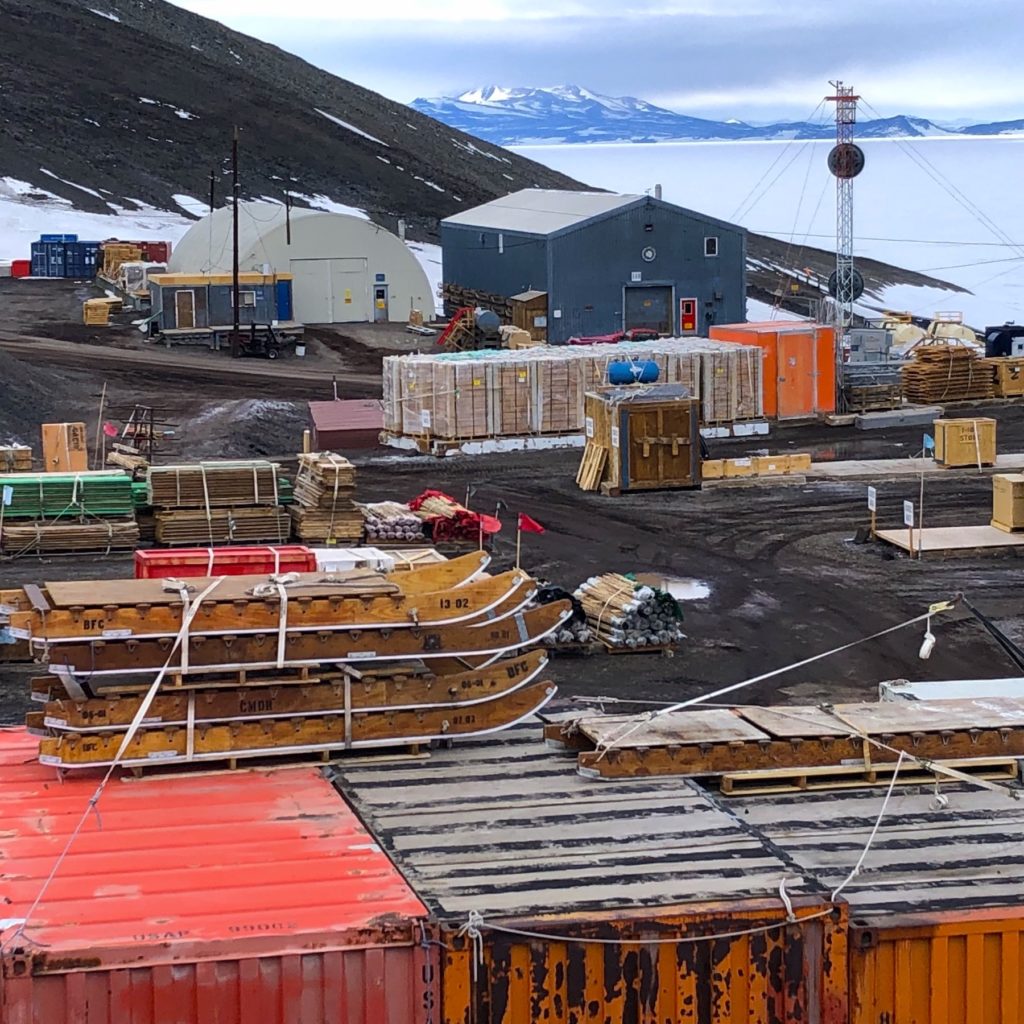 Cargo Yard at McMurdo Station
Cargo Yard at McMurdo Station
We had an amazing 24 hours on an equipment shake-down and skills development excursion. Our team of six left the McMurdo Station on six snowmobiles with some tents, cooking gear, food and sleeping gear packed on long, plastic sleds towed behind.
The first segment was about 10 miles across snow-covered sea ice. It’s hard to describe the feeling of zipping along on top of a frozen sea with wide-open, white scenery in all directions. We stopped at a location out on the Ross Ice Shelf and set up our tents, including practicing cutting blocks of snow and building walls that would be useful to protect tents in heavy winds.
 Building a Snow Wall
Building a Snow Wall
This is where we would spend the night, but first we got back on the snowmobiles and rode onto the snowfields of Hut Point Peninsula, Ross Island.
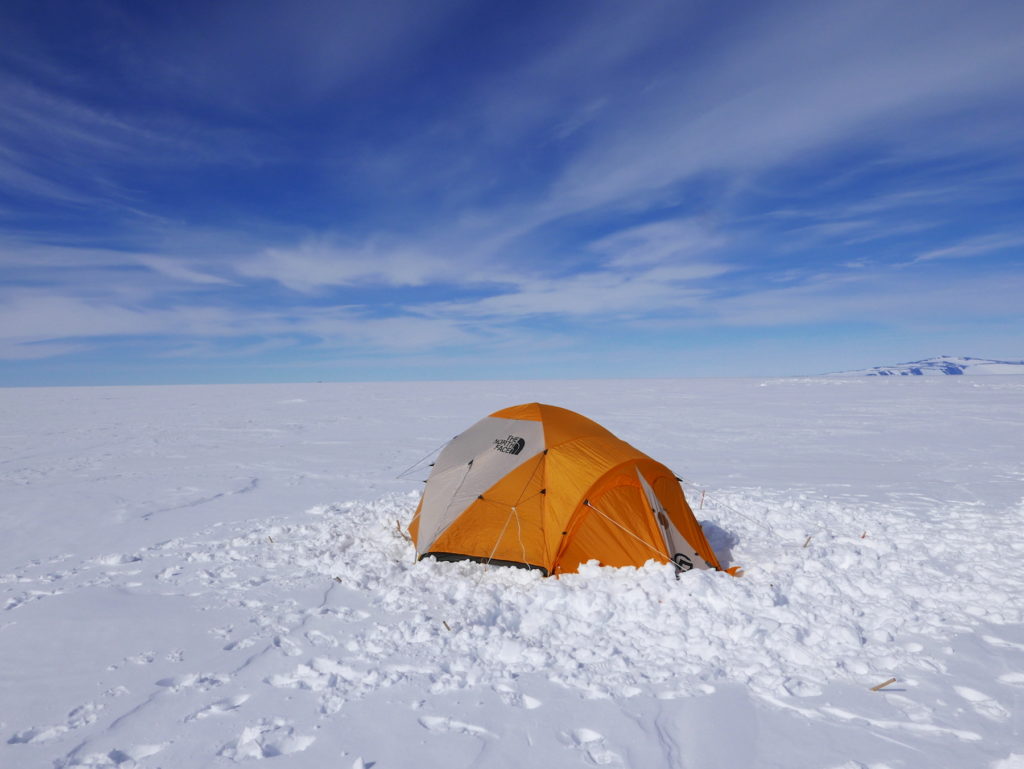 Shake-down tent on Ross Ice Shelf
Shake-down tent on Ross Ice Shelf
As we rode off the ice shelf we stopped for a few hours at a place where a deep crevasse in the glacial ice had been identified and marked. We practiced our techniques of roping-together and walking across crevassed terrain, just in case we ever needed to do so in the field.
At the marked crevasse we used ropes and climbing equipment to simulate a crevasse rescue. Actually, we lowered Tim Senden (one of my teammates from Australian National University) into the crevasse, to a depth of at least 50 feet in the four-foot-wide slot in the ice. Tim described smooth ice walls, an eerie blue light, and silence. We used a pully system with climbing ropes to bring him out. All this done with safety measures so that Tim was never in any danger.
Back on the snowmobiles we followed Castle Rock Trail, a recreational area on the glaciers behind McMurdo Station. We practiced going up, down and across snowy slopes, picking routes while weaving through rocky terrain and driving across hard ice patches.
All the while, to our east, Mt. Erebus (12,448 feet) cleared of clouds for spectacular views along the north shore of the Hut Point Peninsula with the Erebus Glacier forming ice cliffs as it reaches to the shoreline. Although Mt. Erebus is almost completely sheathed in snowfields and glaciers, it is a volcano that has a steaming caldera at the top. This, and other volcanic features in the area, are evidence of the rifting (moving apart) of East Antarctica and West Antarctica.
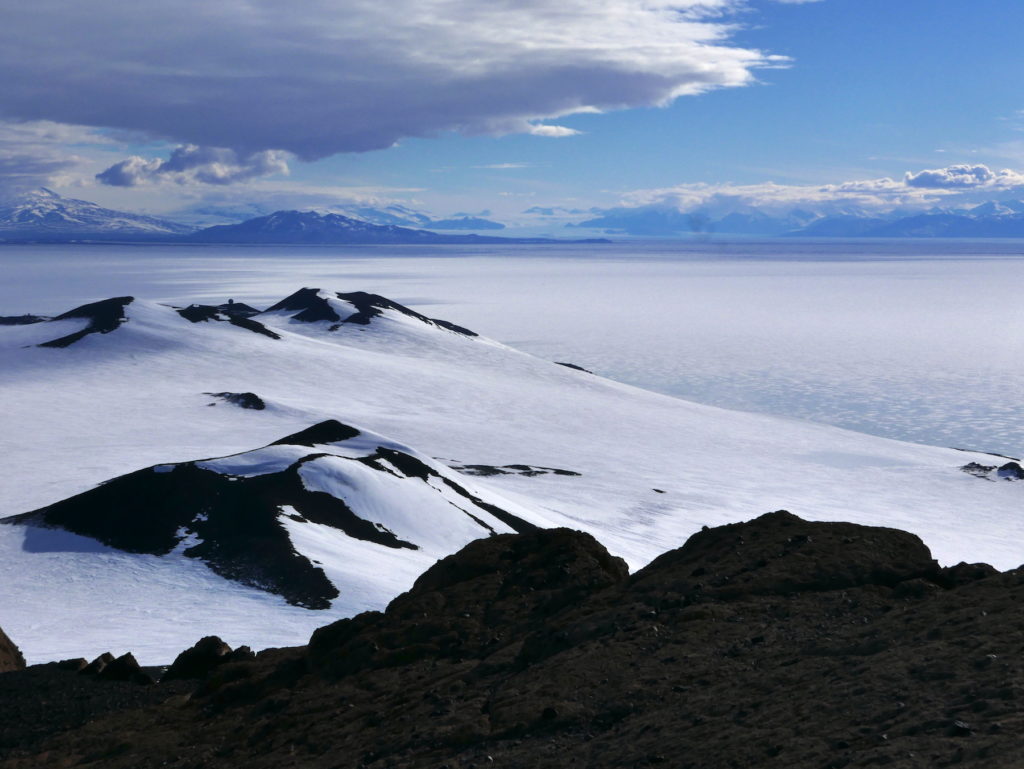 View from Castle Rock across McMurdo Sound
View from Castle Rock across McMurdo Sound
We finished the evening by climbing Castle Rock, a peak of volcanic rock surrounded by ice fields. We used crampons to negotiate the lower icy slopes.
Once we reached the coarse volcanic rock, we took off the crampons and clambered another 500 feet to the top for a remarkable vista of the surrounding landscape. It was 8 p.m. and the most sun-drenched part of the day.
We got back on the snowmobiles for the ride across the snowfields and down onto the ice sheet again, then back to our temporary camp by about 9:30 p.m. After melting snow to make boiling water on our propane stove, we had a dehydrated meal (Kung Pao Chicken for me), and crawled into tents, and very warm sleeping bags, for the night.
The next morning we packed-up our temporary camp and headed back across the ice to McMurdo Station.
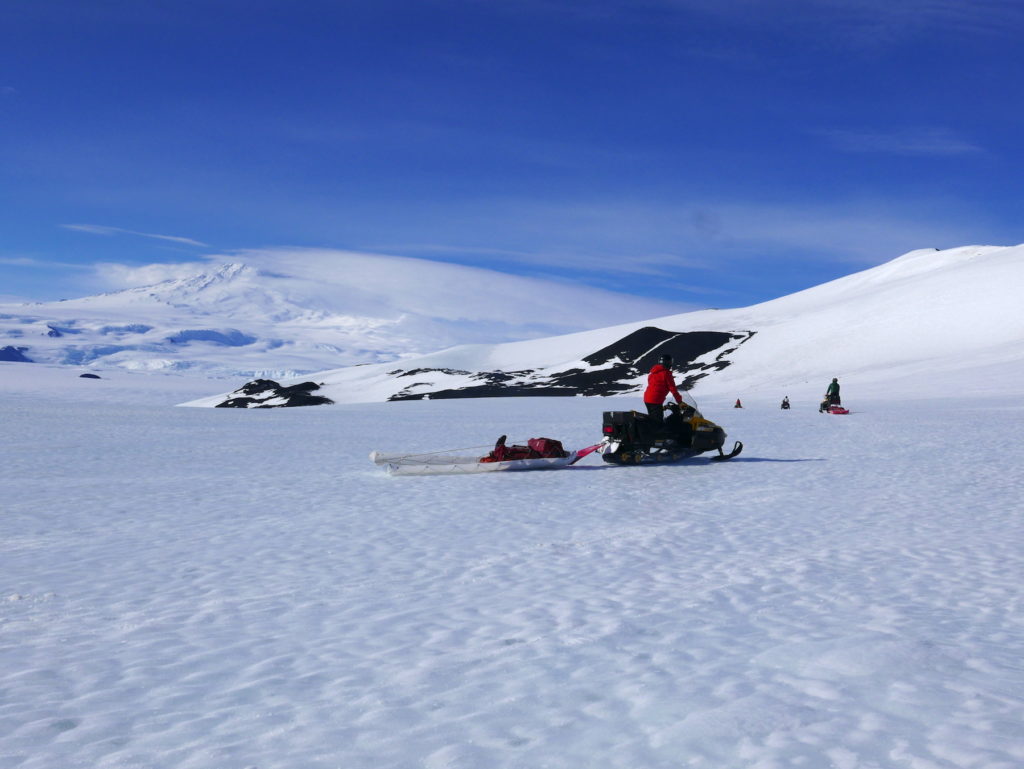 Snowmobile Training
Snowmobile Training
At the moment we are pretty much in a holding pattern. Having accomplished all the tasks to prepare for our fieldwork, we are in the queue for flights into our field sites in the Boomerang and Warren Ranges around Deception Glacier (78° 31.587’S 158° 35.128’E).
Meanwhile, we’re able to work online (a bit slow) from the Crary Science Center, one of the few places with public WiFi. We hike around the volcanic terrain surrounding the base, a necessity after we’re treated to three all-you-can-eat meals a day!
The Antarctic summer temperatures at the base have been relatively mild (just below freezing), though wind chills make it sting. We expect quite a bit colder temps at our field camp at about 5,000 feet elevation on the Antarctic Plateau. The endless sunlight is becoming normalized, though sometimes still startling.
Communications from our field camp to the safety system at McMurdo Station is a high priority and accomplished with redundant systems. Communication with home and work from the field will be more difficult, but we expect to use an Iridium system for limited emails and calls.
I hope to be able to update this blog with some short messages during the four weeks that we are out there. Stay tuned. Signing off for now.
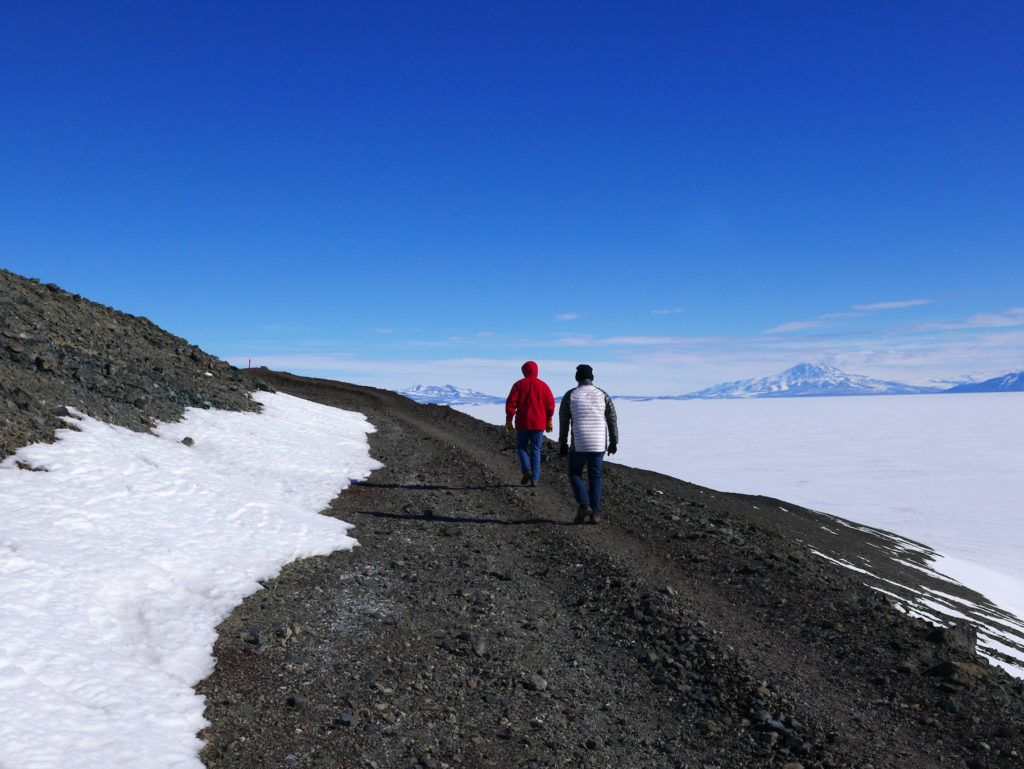 Observation Hill Trail outside McMurdo Station
Observation Hill Trail outside McMurdo Station
Text and Photos by Ted Daeschler, PhD, curator of paleontology and professor in the Department of Biodiversity, Earth and Environmental Science
To watch a video interview with Ted that explains his Antarctic research expedition, click here and to see his first post in this series. Use this link to see his report from week one.